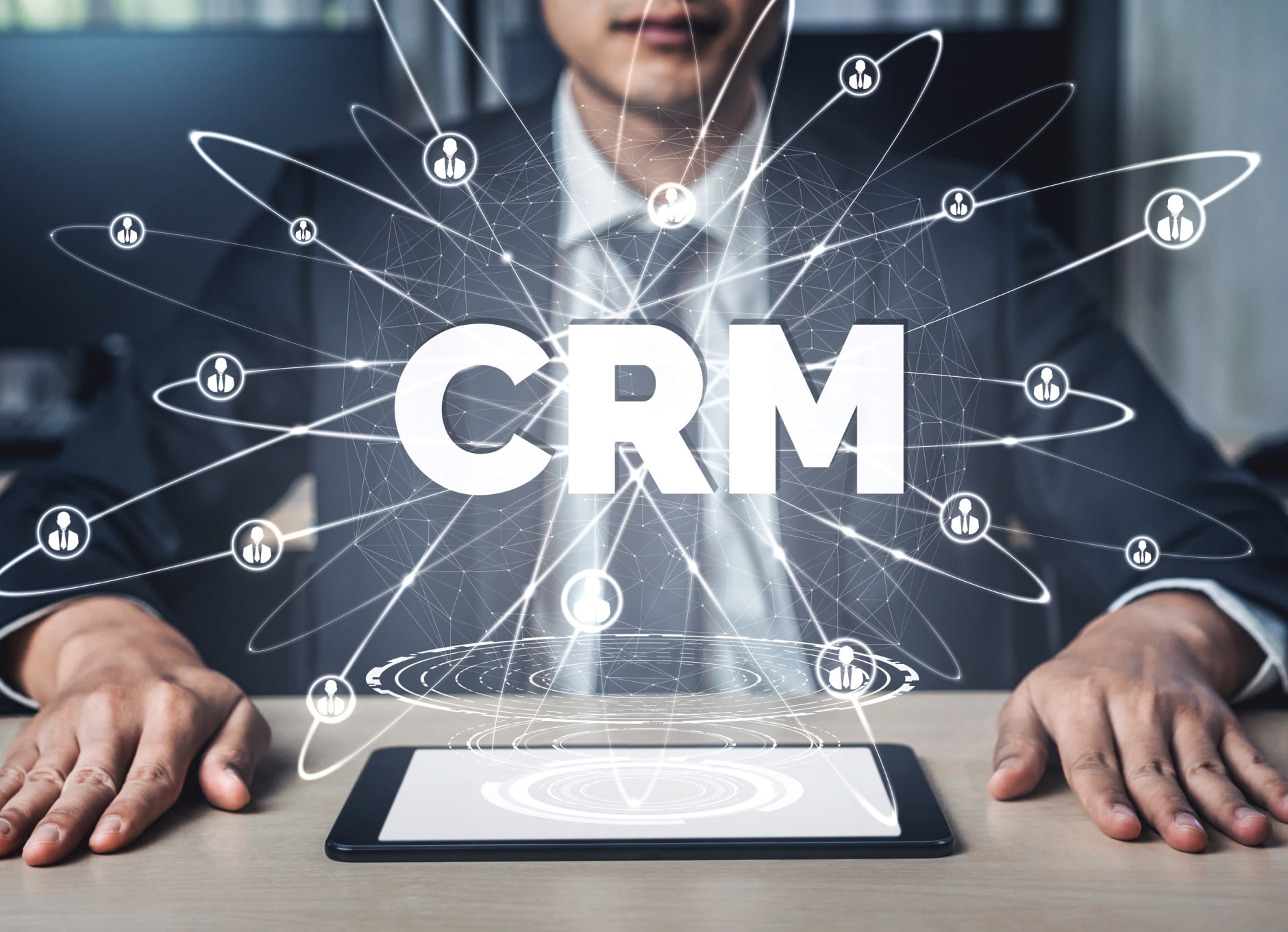The Role of CRM in Improving Payment Experiences for Your Customers
Discover how CRM systems enhance payment experiences by streamlining transactions, personalizing billing, and improving customer satisfaction throughout the payment journey.
When it comes to customer satisfaction, the payment experience is often the final test — and the most overlooked. It’s not just about whether a transaction goes through; it’s about how effortless, personalized, and reassuring the process feels. This is where modern CRM systems are changing the game. No longer confined to sales pipelines and email campaigns, today’s CRMs are becoming powerful tools for refining every stage of the payment journey. By connecting customer insights with payment behaviors, businesses can reduce friction, anticipate needs, and turn routine transactions into moments that build long-term loyalty.

Understanding CRM in the Context of Payments
CRM systems like Germius are increasingly used to manage and improve the payment experience by integrating customer data with financial interactions. At a practical level, CRMs store detailed profiles that include purchase history, preferred payment methods, billing addresses, communication preferences, and subscription status. This information is essential for automating and personalizing every step of the payment journey.
For example, a CRM can trigger personalized payment reminders before a due date, detect failed transactions and notify the customer instantly, or auto-fill billing details during checkout to reduce drop-offs. When integrated with payment gateways or billing platforms, CRM systems can monitor real-time payment statuses, track invoices, and manage subscription lifecycles directly within the customer profile.
Businesses use CRMs for payments because they provide visibility and control over the entire customer lifecycle, from the first interaction to the final transaction. This results in fewer errors, faster issue resolution, and more relevant communication. It also supports smarter decision-making by linking payment behavior to customer satisfaction, churn risk, and lifetime value. Ultimately, using CRM systems for payments leads to more efficient operations and a more seamless experience for customers.
Benefits of CRM-Driven Payment Experiences
When businesses leverage CRM systems to manage payments, they unlock a range of benefits that enhance both operational efficiency and the customer experience. Some of the key advantages include:
- Enhanced personalization by tailoring payment options based on customer preferences and purchase history
- Faster checkout processes through auto-filled billing information and saved payment methods
- Automated and timely communication including payment reminders and notifications about failed transactions
- Improved accuracy and fewer errors by centralizing customer and payment data in one system
- Increased customer trust and loyalty thanks to transparent and responsive payment interactions
- Greater visibility into payment trends and customer behaviors, enabling data-driven optimization
- Streamlined dispute and chargeback management using detailed transaction and communication records
- Reduced payment friction leading to higher conversion rates and fewer abandoned carts
- Simplified subscription and renewal management through automated workflows and alerts
- Strengthened collaboration between sales, customer service, and finance teams through shared information
By embracing CRM-driven payment processes, companies can create smoother transactions that not only boost revenue but also foster lasting customer relationships.
Integration of CRM with Payment Systems
Integration of CRM with payment systems involves connecting customer relationship management platforms directly with payment processing tools to create a unified and efficient workflow. This connection allows businesses to access real-time payment information alongside detailed customer profiles, enabling a comprehensive view of each transaction within the broader context of the customer relationship.
By integrating these systems, companies can automate key tasks such as updating payment statuses, triggering reminders for upcoming invoices, and managing subscription renewals without manual intervention. It also facilitates smoother coordination between sales, finance, and customer support teams, as everyone works from the same up-to-date data.
This seamless integration reduces errors and delays, enhances the accuracy of billing and reporting, and improves the overall customer experience by making payments faster and more transparent. Ultimately, combining CRM with payment systems transforms what might otherwise be a disconnected and cumbersome process into a streamlined, customer-centric journey that drives loyalty and operational efficiency.
CRM’s Role in Chargeback and Dispute Management
Effective chargeback and dispute management is crucial for safeguarding revenue and maintaining customer trust. CRM systems enhance this process by providing a centralized platform that organizes data, streamlines communication, and accelerates resolution. Below are key benefits of using CRM in managing chargebacks and disputes:
-
Centralized customer and payment data.
Having all relevant information in one place enables support teams to respond quickly and accurately to disputes with full context. -
Detailed communication tracking.
Recording when and how customers were contacted ensures compliance and strengthens the case during dispute investigations. -
Early risk detection.
Analyzing transaction patterns helps identify accounts with higher chargeback risk, allowing businesses to take preventive measures before issues escalate. -
Proactive customer outreach.
Contacting customers promptly about payment issues often resolves problems before they turn into formal disputes. -
Improved cross-team collaboration.
Sharing information across customer service, finance, and fraud prevention teams reduces delays and enhances dispute resolution efficiency. -
Automated alerts for suspicious activity.
Instant notifications like Ethoca and Verifi help businesses act quickly to prevent fraudulent chargebacks and minimize losses. -
Organized evidence management.
Keeping thorough documentation supports stronger dispute submissions and increases the chances of winning chargeback cases. -
Faster resolution times.
Easy access to customer and transaction data reduces the time and cost associated with managing disputes. -
Root cause analysis capabilities.
Understanding why chargebacks happen enables companies to implement effective strategies that reduce future occurrences. -
Increased customer confidence.
Transparent and efficient dispute handling builds trust and helps preserve long-term customer relationships.
By integrating CRM tools into chargeback and dispute management, businesses protect their bottom line while fostering a more reliable and responsive payment experience.

Leveraging CRM Analytics for Payment Optimization
Leveraging CRM analytics for payment optimization involves systematically collecting and analyzing customer and payment data within the CRM platform to identify opportunities for improving the payment process. Merchants gather information such as transaction success rates, preferred payment methods, timing of purchases, and instances where customers abandon their carts or experience failed payments. By examining this data, merchants can uncover specific friction points that may be causing customers to hesitate or drop out during checkout.
This analytical process allows merchants to make informed decisions, such as introducing more popular payment options, simplifying the checkout steps, or sending targeted reminders to customers who have incomplete purchases. It also helps detect patterns of fraudulent activity or unusual behavior, enabling proactive fraud prevention measures.
Challenges and Considerations
Integrating CRM systems with payment processes offers many benefits, but it also comes with a set of challenges and important factors that businesses must carefully consider. Understanding these obstacles helps ensure smoother implementation and ongoing success.
-
Data privacy and security requirements.
Handling sensitive payment and customer data demands strict compliance with regulations such as GDPR and PCI DSS to protect against breaches. -
Integration complexity.
Connecting CRM systems with various payment gateways and platforms can be technically challenging and may require custom development or middleware. -
Data synchronization issues.
Ensuring that customer and payment information stays accurate and up-to-date across multiple systems requires robust synchronization processes. -
User adoption and training.
Teams need proper training to effectively use integrated CRM and payment tools, which can impact initial productivity. -
System scalability.
As transaction volumes grow, the CRM and payment systems must be able to scale without performance degradation. -
Cost considerations.
Implementing and maintaining integrated CRM-payment solutions may involve significant upfront and ongoing expenses. -
Handling diverse payment methods.
Supporting a wide variety of regional and alternative payment options can complicate system design and user experience. -
Managing error resolution workflows.
Establishing clear processes for addressing payment failures or disputes within the CRM requires careful planning. -
Balancing automation with personalization.
While automation improves efficiency, maintaining a personalized customer experience is essential and can be challenging to achieve. -
Continuous monitoring and updates.
Payment regulations, customer preferences, and technology evolve rapidly, requiring ongoing system maintenance and adjustments.
By acknowledging these challenges early and planning accordingly, businesses can better navigate the complexities of CRM-payment integration and create a more effective, secure, and customer-friendly payment experience.
Conclusion
As payment interactions become more closely tied to overall brand perception, the role of CRM has expanded beyond its traditional boundaries. When businesses treat the payment experience as an extension of the relationship they are building with each customer, CRM systems become a powerful tool for creating consistency, trust, and satisfaction. The ability to anticipate needs, resolve issues proactively, and tailor every interaction (right down to the moment of payment) sets forward-thinking companies apart. In a market where loyalty is earned through experience, not just service, a CRM that enhances how customers pay can quietly become a key competitive advantage.


